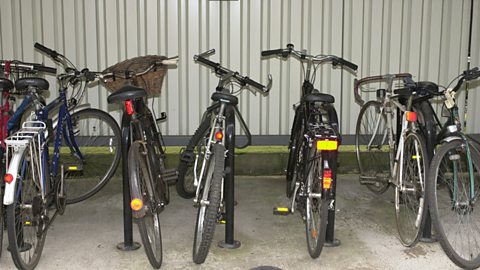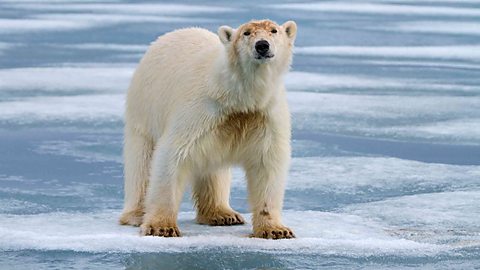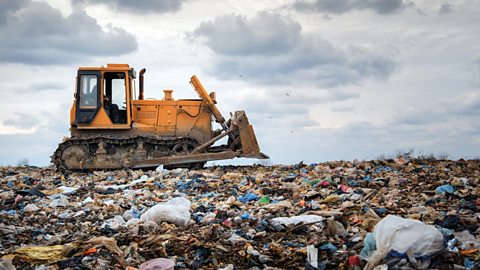Key points
- An increase in greenhouse gases in the atmosphere is causing the planet to increase in temperature. This is causing climate change.
- The effects of climate change include rising sea levels, more extreme weather and more forest fires.
Video - Greenhouse gases and climate change
Greenhouses can be good for growing plants. But when applied to the whole planet, the greenhouse effect is bad news.
We call the compounds in the atmosphere that trap Earths heat, such as carbon dioxide and methane, greenhouse gases. They occur naturally, but human activity has generated more and more greenhouse gases and they now trap too much heat, raising the Earths temperature and causing climate change.
Rising temperatures are melting glaciers, raising sea levels and increasing the risk of flooding worldwide. Climate change disrupts weather patterns, causing events like droughts and wildfires, hurricanes and tornadoes, and extreme cold snaps to become more frequent and severe.
Climate change is also affecting natural habitats so wildlife lose their homes and species die out. The cascading effects across global ecosystems have consequences for all natural life. And that includes us.
To reverse the effects of climate change, both individuals and companies must take action to reduce the amount of greenhouse gas they produce and become more responsible for their impact on the environment.
Can you answer these questions based on the video?
1. Name two greenhouse gases.
2. What are rising temperatures doing?
Carbon dioxide and methane.
Melting glaciers, raising sea levels and increasing the risk of flooding worldwide.
The greenhouse effect
Thermal energy (heat energy) radiates from the Sun. Some of this hits the Earth. Without this, there would be little or no life on Earth. Not all of the thermal energy that hits the Earth stays here. Some of it is reflected off pale, shiny surfaces like ice and escapes into space.
Some gases in the atmosphere, called greenhouse gas Gases such as water vapour, carbon dioxide, and methane in the EarthÔÇÖs atmosphere that trap heat., trap escaping thermal energy. This causes some of the thermal energy to return to the surface and warm it up. This is called the greenhouse effectThe retention of heat in the atmosphere caused by the build-up of greenhouse gases. It is much hotter standing in a greenhouse or sitting in a car with the windows up on a sunny day than a cloudy one for the same reason. As there are more greenhouse gases in the atmosphere, the Earth is getting hotter.
Increasing carbon dioxide levels
Humans burn fossil fuelsCoal, oil and natural gas. to generate electricity, to keep buildings warm, and to power cars and other machines. Waste gases are released during this combustionAnother name for burning. When a fuel reacts with oxygen and releases useful energy., including carbon dioxide. As the human population has increased more fuel is used and more carbon dioxide is released.
Carbon footprint

The amount of carbon that our activities release is called our carbon footprint. Some activities are described as carbon neutral. These add no extra carbon dioxide to the atmosphere and have no effect on our carbon footprint. For example, walking or cycling to school is carbon neutral.
Other activities store carbon and so reduce it from the atmosphere. This also decreases your carbon footprint. Planting trees or other plants is an important way to remove carbon from the atmosphere.

Climate change
Extra carbon dioxide in the atmosphere increases the greenhouse effect. More thermal energy is trapped by the atmosphere, causing the planet to become warmer than it would be naturally. This increase in the Earth's temperature is called global warming.
Climate scientists now agree that the increasing levels of carbon dioxide and other greenhouse gases are directly linked to the increasing global temperatures. Global warming is having an effect on the world's climates. This is called climate change.
The impact of climate change

The weather includes the wind, sunshine and rain you see from day to day. The climate is the weather seen over years and decades. Climate change and its effects as a result of global warming include:
- Ice on land melting faster than it can be replaced in the Arctic and Antarctic, causing sea levels to rise.
- Oceans warming up, which affects corals as they bleach and then die.
- Extreme weather events like flooding and heat waves, cold snaps and violent storms.
- Increases in the number and strength of forest fires.
- Changes to the places where animals and plants live, making their survival harder.
- More tropical diseases spreading to new places as insects fly to new homes.


What can we do?

There are things we can do to help stop climate change.
- When other options are available, don't travel by aeroplane or car, especially petrol and diesel cars.
- Walk, cycle or use public transport.
- Eat less meat - animals release a lot of methane, especially cows and pigs.
- Reduce, reuse and recyclingConverting waste into reusable material. waste.
- Support sustainableNot affecting the environment for future generations. companies, which do not pollute as much as other companies.
- Wear more clothes and heat our homes less.
- Turn off electrical appliances when we are not using them.
- Plant trees.
- Use 'green' electricity from solar panels and wind turbines.
- Buy second-hand clothes, electronics and furniture instead of new ones.

Test your knowledge
Quiz
Test questions
Write a paragraph to answer the following question. Tap 'Show answer' to see seven points you could have included.
What are the causes and impacts of climate change?
- Thermal energy (heat energy) radiates from the Sun.
- Some of this hits the Earth. There would be no life without this.
- Some thermal energy bounces back and escapes into space.
- Greenhouse gases in the atmosphere trap escaping thermal energy.
- This causes some of the thermal energy to return to the surface and warm it up.
- Human activities are increasing the amount of greenhouse gases in the atmosphere.
- An increasing amount of greenhouse gases in the atmosphere means the Earth is getting too warm. This is causing climate change.
Write a paragraph to answer the following question. Tap 'Show answer' to see seven points you could have included.
Describe some of the consequences of climate change.
- Ice is melting faster than it can be replaced meaning rising sea levels.
- The oceans are warming up, which bleaches coral.
- There are changes in where different species of plants and animals can live which is called species migration.
- There are more instances of freak weather events like flooding.
- There is an increase in forest fires.
- More tropical diseases are spreading to new places.
Remember to award yourself marks if you choose a different but correct example.
Play the Atomic Labs game! gamePlay the Atomic Labs game!
Try out practical experiments in this KS3 science game.

More on Humans and the environment
Find out more by working through a topic
- count2 of 2
